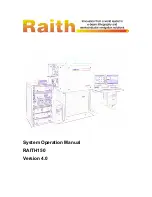
This manual deals with vacuum and pressure, how
it is used in various automotive systems and how
the vacuum pump can be used to test and diagnose
these systems . This section discusses what vacuum
is, how it is measured, where it comes from on an
automobile, the system for distributing and using
vacuum, and some troubleshooting basics .
WHAT IS VACUUM?
Put simply, vacuum is empty space, and may exist
as either a total or partial vacuum . Vacuum does
not, of itself, create power . Rather, power for
vacuum devices depends on the presence of
atmospheric pressure . The atmosphere exerts a
pressure of 14 .7 pounds per square inch (psi) on
everything at sea level . If a portion of the air is
removed from one side of a diaphragm (partial
vacuum), the atmospheric pressure will exert a
force on the diaphragm . The force is equal to the
pressure difference times the diaphragm area
(FIGURE 1) . Generally, the less air (greater
vacuum) in a given space, the more the atmosphere
tries to get in and the more force is created .
HOW IS VACUUM MEASURED?
In the United States, vacuum is commonly measured
in inches of Mercury (“ Hg) . It may also be
measured in centimeters of Mercury (cm Hg) and
kiloPascals (kPa) . Atmospheric pressure will sup-
port a column of Mercury in a manometer gauge
about 30 inches high or about 76 cm high . This is
the barometric pressure in “ Hg which varies as the
weather changes . Vacuum readings in “ Hg are
really negative pressure readings . For example,
30” Hg vacuum would be a complete vacuum . Half
of a complete vacuum would be 15” Hg . A gasoline
engine at idle usually pulls about 16-22” Hg
vacuum . On deceleration, because the throttle is
closed, the vacuum will increase . The pump will pull
about 25” Hg as indicated on its vacuum gauge
which is calibrated in both “ Hg and kPa .
WHY ENGINES CREATE VACUUM
Vacuum is created when air is withdrawn from
a given volume, or a sealed volume is increased .
That is why vacuum is avail able in an engine .
On the intake stroke, the piston moves down, this
creates a partial vacuum because the volume of the
cylinder is increased . Air cannot rush through the
intake system fast enough to totally fill the space
created when the piston moves down (FIGURE 2) .
This is the most common automotive vacuum
supply source .
GASOLINE VS. DIESEL VACUUM
Because a diesel engine does not produce as much
vacuum as a gasoline engine, a mechanical vacuum
pump must be employed to operate vacuum
devices . The pump is useful in testing devices
on both types of engines .
the automotive vacuum sYstem
Form 824426
Page Number - 5
FIGURE 1:
VACUUM VS. ATMOSPHERIC PRESSURE
14 .7 - 10 .7 = 4 PSI
40 Pounds
14 .7 PSI
10 .7 PSI
Piston area 10 sq . in .
FIGURE 2: THE ENGINE AS A VACUUM SOURCE
Vacuum
Air
Vacuum Port
Intake Stroke






































